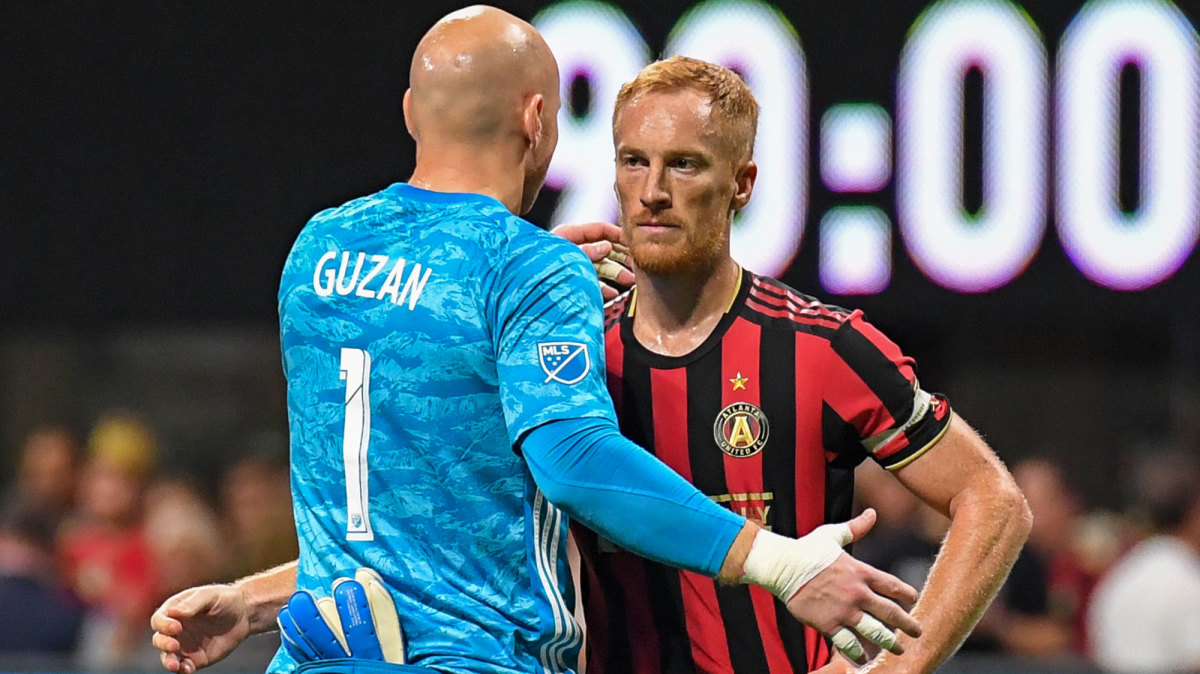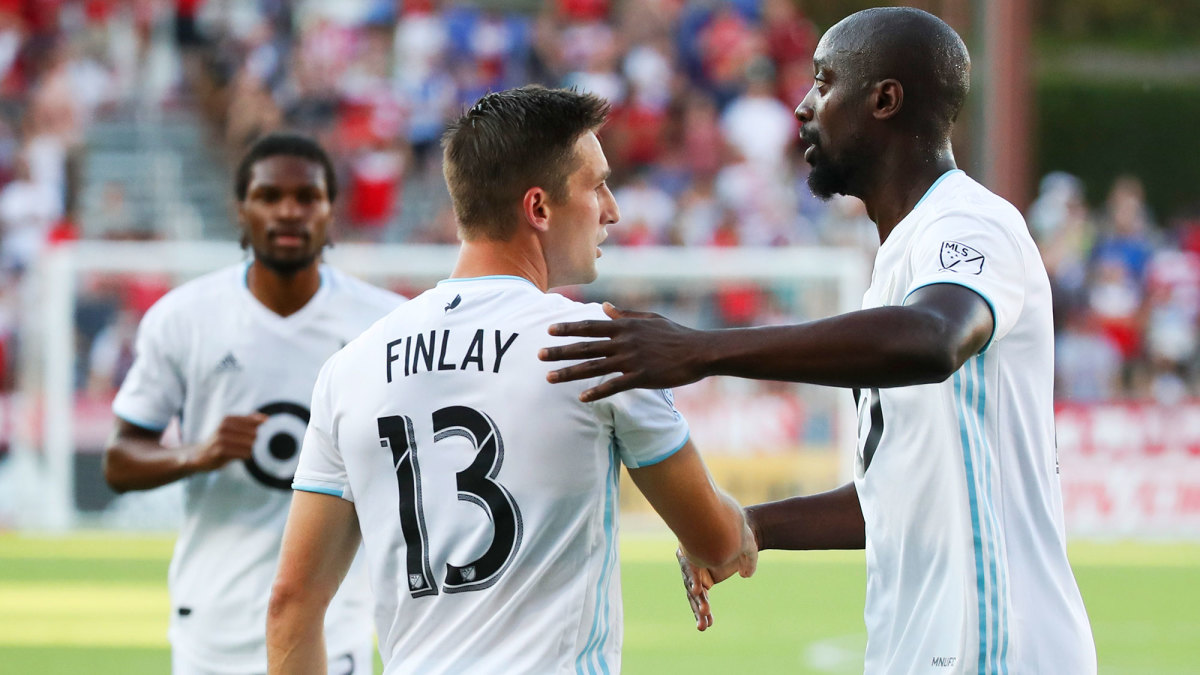From Players' Perspective, MLS CBA Gains Make 2015 Sacrifices Worthwhile

At first, there was relief. Just a couple days before the 2015 MLS season kicked off—and the scheduled debuts of New York City FC and Orlando City—U.S. federal mediators helped the league and players reach a collective bargaining agreement. Negotiations had been contentious. The players voted overwhelmingly to strike. When the deal was announced, most players, fans and observers were simply glad the start of the season had been saved.
That positivity didn’t last long. Although the MLS Players Association succeeded in securing a rather limited form of free agency—and did so without a work stoppage—the prevailing sentiment quickly soured. The union had yielded far too much in its pursuit of free agency, it seemed, leaving millions of dollars and other potential gains on the table.
“Players are disappointed and upset with the union reps and [executive director] Bob Foose,” one player told SI.com. “Not only did this deal destroy the future of the American player, it barely helps the current group of players.”
Another told ESPN, “We caved and didn’t stand up for ourselves.”
Defeat appeared so comprehensive that even non-traditional media piled on. Vice published a story headlined, “Insiders and Agents Trash the New MLS Labor Deal.” Among the observations from agents and others connected to the negotiations were that, “The players blinked first,” and, “Union leadership really blew that.”
The Nation said, “Players Union Scores an Own Goal.”
That CBA is no more. On Thursday morning, the major terms of a new five-year (2020-2024) labor agreement between the league and players was announced. It comes well in advance of the Feb. 29 25th season opener and was followed Thursday afternoon by commentary and analysis that was so much more positive. Where there had been recrimination, there’s now some sense of satisfaction. And for Foose and the players, it seems the latter was an inevitable byproduct of the former. They learned some lessons and made some sacrifices in 2015, and then were able to reap more rewards in 2020.
“There was plenty of heat after 2015,” said Atlanta United’s Jeff Larentowicz, a member of the seven-man MLSPA Executive Board. “There were so many philosophical barriers we felt we needed to break down and they were never going to be easy. It probably was going to be a multi-part job for us. When you step back and look at how this deal looks and how it relates to the last deal, they really go hand in hand.
“Maybe the heat we took, we weren’t going to see the fruition of that labor until now and I think we see it here,” he continued. “It’s not perfect, but I think where we are now is in a much better spot because of 2015.”

The union had hoped that forcing the free agency door ajar, even slightly, would establish a trajectory that couldn’t be reversed. And Thursday, terms were revealed that will more than double the pool of players eligible for free agency, Foose said (although limits on the available raises remain—this was a negotiation).
In addition, MLS owners will increase investment in each first-team roster (minus Designated Players) from $8.5 million in 2019 to $11.6 million in 2024. There’s also more flexibility in how some money can be spent across a roster, a healthy increase in the minimum wage, plus a first-of-its-kind provision that will send a percentage of future media rights dollars to the players. And critically for the union, at least eight charter flights are now required this regular season, with the number incrementally growing and ultimately doubling through the duration of the CBA.
“This agreement represents broad progress for all players, and that’s maybe something that wasn’t felt in 2015,” said Minnesota United winger Ethan Finlay, another Executive Board member. “Every player can open up the summary [of the new CBA] and they’re affected by it directly, and that gives us a positive feeling.”
Over the past few weeks and again on Thursday, both sides of the negotiating process painted a rosy, cooperative picture. Talks started earlier. They were less frantic and combative. The union spent the intervening years doubling down on its efforts to engage and involve players (such as by holding every meeting in English and Spanish), and it was more aligned on which goals to pursue.
“This is the third major negotiation I’ve gone through and I can say that this is the first I’ve done from my couch, so to speak,” Larentowicz said.
Added Foose: “There was a lot more conversation, a lot more communication, and both sides really understanding where the other one was coming from.
"The work that the [Executive] Board and the bargaining committee [of 85 players] did broadened and deepened the level of engagement … and also made this a much more seamless process on our side. Their work allowed us at the table to speak very confidently on where the player pool was.”
The MLSPA’s work to shore up its own approach almost certainly coincided with a realization at the MLS board level that 2022—the final year of the current media rights deal and the year by which the league was supposed to be considered one of the best in the world—is fast approaching. Forbidding free agency was one philosophical pillar. Other, closely related ones have been cost certainty and central control.
Those pillars can support only so much weight, however, and the desire to be bigger on TV and better than Liga MX was always going to require more investment. Clubs like the Seattle Sounders, Atlanta United and Los Angeles FC are demonstrating the league’s potential and shining a harsh light on its more conservative stragglers. In short, the owners probably realized that much of what the MLSPA wanted was in their own interest.

“Creating leverage for players has always been a challenge in this league, and this deal has been monumental in changing that,” Finlay said. “We see that as a positive thing from a competition standpoint as well as from a fairness side.”
Negotiators typically will defend the result of their negotiation. But a glance at the Twitter timeline on Thursday suggested the rank and file were pleased as well. The messages from player to player ranged from congratulatory to optimistic—a far cry from the quiet or consternation of five years ago. Not every piece of the CBA was a win. They gave a bit (see, TAM) to get. But it does appear MLS players will kick off the season a far more satisfied bunch then they were in 2015.
“We’re tremendously happy with where we got to. It was a CBA negotiation, so you never get absolutely everything you want,” Foose said. “But we got a deal that’s going to significantly change what it means to be an MLS player and leads us into the future, so we’re thrilled with that.”
